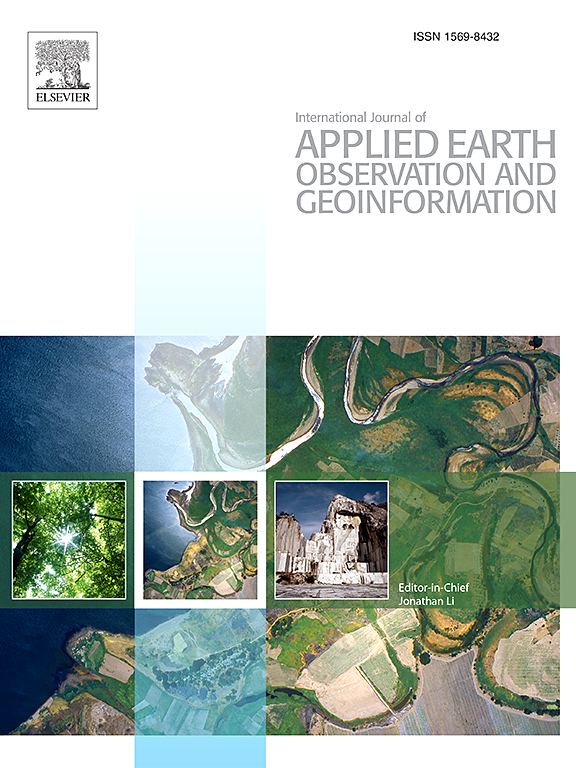From spark to suppression: An overview of wildfire monitoring, progression prediction, and extinguishing techniques
IF 7.6
Q1 REMOTE SENSING
International journal of applied earth observation and geoinformation : ITC journal
Pub Date : 2025-05-15
DOI:10.1016/j.jag.2025.104600
引用次数: 0
Abstract
Wildfires, a natural phenomenon predating human civilization, present severe threats to ecosystems, socio-economic factors, and human health. Due to climate change and human influence, the frequency and intensity of global wildfires are on the rise, which emit gigantic amounts of emissions into the atmosphere and compound the world’s efforts to tackle global warming. This study introduces and summarizes the response to wildfires, including fire monitoring, development prediction, and firefighting technology. Satellites, watchtowers, drones, and wireless sensor networks provide comprehensive forest fire monitoring data to fire departments. Artificial intelligence algorithms enhance data analysis and processing efficiency. Real-time wildfire risk prediction strategically guides fire force deployment, optimizing limited resources. The use of unmanned equipment in frontline firefighting enhances efficiency while minimizing risks to firefighters. However, it is revealed that effective rapid control plans for remote, isolated extreme fires remain lacking. This article aims to summarize the latest available technologies and strategies for responding to sudden wildfires, and aid relevant departments and personnel in devising emergency plans for the rapid detection and suppression of wildfires.
从火花到扑灭:野火监测、进展预测和灭火技术概述
野火是一种早于人类文明的自然现象,对生态系统、社会经济因素和人类健康构成严重威胁。由于气候变化和人类活动的影响,全球野火的频率和强度都在上升,这些野火向大气中排放了大量的排放物,加剧了世界应对全球变暖的努力。本研究介绍和总结了对野火的响应,包括火灾监测、发展预测和消防技术。卫星、瞭望塔、无人机和无线传感器网络为消防部门提供全面的森林火灾监测数据。人工智能算法提高了数据分析和处理效率。实时野火风险预测战略性地指导消防力量部署,优化有限的资源。在一线消防中使用无人设备可以提高效率,同时最大限度地降低消防员的风险。然而,对于偏远、孤立的极端火灾,仍然缺乏有效的快速控制计划。本文旨在总结应对突发性山火的最新技术和策略,帮助相关部门和人员制定快速发现和扑灭山火的应急预案。
本文章由计算机程序翻译,如有差异,请以英文原文为准。
求助全文
约1分钟内获得全文
求助全文
来源期刊

International journal of applied earth observation and geoinformation : ITC journal
Global and Planetary Change, Management, Monitoring, Policy and Law, Earth-Surface Processes, Computers in Earth Sciences
CiteScore
12.00
自引率
0.00%
发文量
0
审稿时长
77 days
期刊介绍:
The International Journal of Applied Earth Observation and Geoinformation publishes original papers that utilize earth observation data for natural resource and environmental inventory and management. These data primarily originate from remote sensing platforms, including satellites and aircraft, supplemented by surface and subsurface measurements. Addressing natural resources such as forests, agricultural land, soils, and water, as well as environmental concerns like biodiversity, land degradation, and hazards, the journal explores conceptual and data-driven approaches. It covers geoinformation themes like capturing, databasing, visualization, interpretation, data quality, and spatial uncertainty.
 求助内容:
求助内容: 应助结果提醒方式:
应助结果提醒方式:


